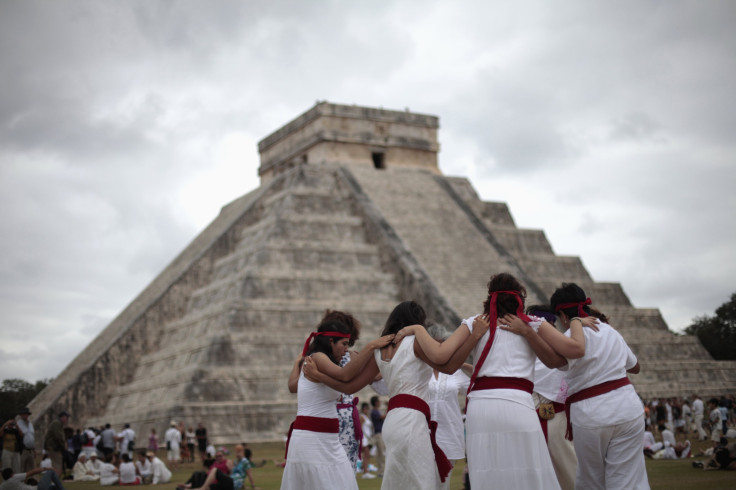Mayan Calendar 2012: How Mexico Benefits From ‘Doomsday’ Hysteria

Does Mexico mind that doomsday prophets have used the Mayan calendar to foretell the end of the world in 2012? Hardly.
On Friday afternoon, Gerardo Llanes, chief marketing officer of the Mexico Tourism Board, laughed at the thought that he might not be alive.
“We’re still waiting,” Llanes joked -- and he’s not alone. Some 150,000 tourists were in southeastern Mexico Friday for what the tourism board has branded as “the beginning of a new era.” In Chichen Itza alone, more than 10,000 people have gathered for a ceremony that will take place Friday evening.
“It’s going to be crazy,” Llanes said. “There is a lot of mystery going around from a sick point of view that the world will end, but most are just looking for the positive energy from the new era.”
The Maya world has long been relegated to archaeologists and other scientists, so Mexican tourism officials see 2012 as something of a coming-out party. And, thanks to interest in the Mayan calendar, it appears to be working.
In the last year, the number of visitors to the five states that house Maya ruins has increased dramatically. Hotels have been at about 90 percent occupancy, Llanes said, while the number of flights to the region has grown by about 7 percent.
Indeed, more than 10.8 million international tourists visited Mexico in the first seven months of 2012 alone, representing an increase of 3.3 percent over the same period last year.
Of course, all of this comes to a climax on Friday evening when the states of Campeche, Chiapas, Tabasco, Quintana Roo, and Yucatan each host events at important Maya sites that will range from rustic low-budget ceremonies thanking the gods to high-level concerts featuring the likes of Placido Domingo (shh, that was supposed to be a secret).
Llanes said each state has put in place all the necessary safety measures, but added that cities in southeastern Mexico are some of the safest in the world. He said officials are not worried about any fanatics, either, because the movement in Mexico is more about “positive energy than negative.”
“People who’ve come to Mexico understand that this is about a great moment in time, not the end of it,” he said.
Mexican tourism officials not only launched a massive advertising and marketing campaign around Dec. 21, but also worked with the likes of National Geographic and the Travel Channel to make sure the message was framed in the right way to position Mexico as the next big destination for cultural tourism.
“Mexico could be a cultural powerhouse,” Llanes boasted. “We have so many more things to offer besides the beach and sun. We have archaeology. We have the Aztecs and the Olmecs. In Mundo Maya you have actual people of Maya descent who hold these traditions.
“Yea, we have the best beaches in the world,” Llanes claimed, “but close to Cancun you can also have ancient history and archaeology.”
Sure, the National Institute of Anthropology and History, or INAH, acknowledged that just 180 of Mexico’s 29,000 registered archaeological sites are open to the public, but most of these are in the Maya zone -- which is a start.
People fly around the world to visit the Great Pyramids of Egypt and the ruins of Greece and China. The legacy of the Maya, Llanes said, is no less important.
Mexico Tourism Board and the Ministry of Tourism will work closely with the five states of southeastern Mexico to keep the momentum going in 2013 and develop a solid tourist trail. In addition to a new Maya Museum in Yucatan, the tourism board has engaged the government to open more ruins to the public and build better access roads. There is even talk of creating a Mundo Maya train that would cart tourists around to all of the most important sites.
This is Mexico’s plan for the new era. And when the sun rises on Saturday, and we relegate the supposed doomsday to a dark corner of the Internet where it always belonged, Mexico hopes you’ll give it a little more respect -- and a lot more of your tourism dollars.
© Copyright IBTimes 2024. All rights reserved.












